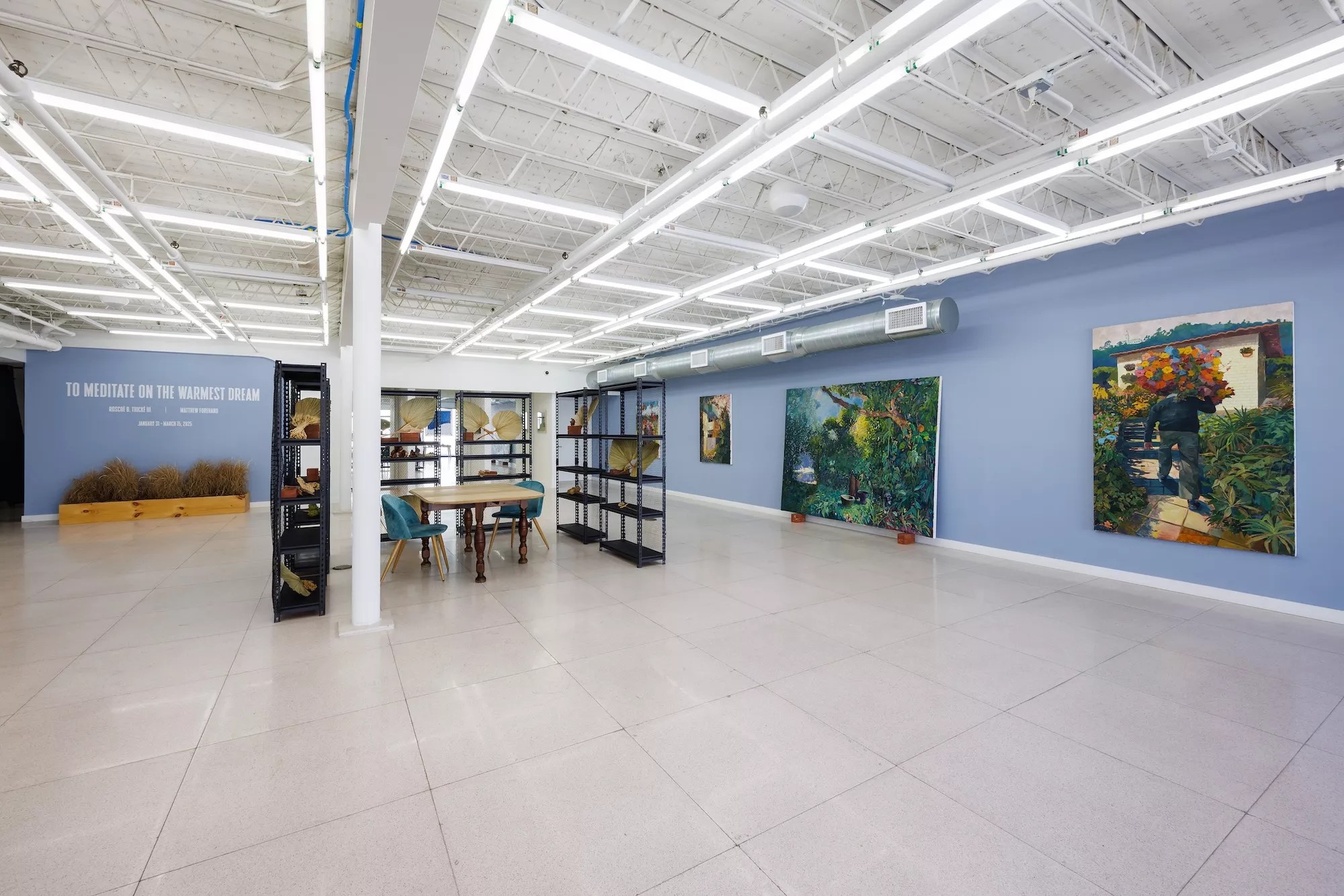
Photo by Francesco Casale

Audio By Carbonatix
When the long-nomadic contemporary art gallery Homework first began redefining its signature pop-ups and activations for a more permanent Little River space last year, cofounder Aurelio Aguiló insisted the walls be painted lavender. Try as he and wife/cofounder Mayra Mejia may. However, the dreamlike shade never materialized, and they chose a blue hue instead.
This, at the time, seemed little more than a nod to the art of the possible. Then over the summer, Aguiló found himself laid up, recovering from surgery. Shaken by a brush with mortality, he sought succor from the past. Leafing through old photo albums, he received it: The gallery blue perfectly matched not only his childhood bedroom but also his grandmother’s house.
For an enterprise devoted to conjuring heightened states of meaning by embracing ephemerality, putting on exhibits in places in the fleeting in-between – an abandoned rum distillery, a gutted motel – and teasing unifying themes out of diverse, seemingly dissonant curations that tap into corporeally quiet undercurrents that speak loudly to our souls. Well, that blue could feel like a wink from the universe.
“Thanks to impermanence, everything is possible,” Thich Nhat Hanh writes in No Death, No Fear. “Life itself is possible. If a grain of corn is not impermanent, it can never be transformed into a stalk of corn. If the stalk were not impermanent, it could never provide us with the ear of corn we eat.”
This year, make your gift count –
Invest in local news that matters.
Our work is funded by readers like you who make voluntary gifts because they value our work and want to see it continue. Make a contribution today to help us reach our $30,000 goal!
Aguiló seems to agree. “I actually don’t like calling the new gallery a permanent space because what’s really permanent in this city or this world or, especially, this life?” he says. “And that’s a mindset that informs everything we do. It’s kind of a funny conversation, actually, ’cause it’s not like art is the most stable business. We could be nomads again tomorrow – and that would be fine. By not trying to make everything last forever – by acknowledging this could all end tomorrow, which it most definitely could – we can be more fearless and freer in the work we do right now.”
Why the shift to a semi-permanent home base for Homework, then?
“It wasn’t like we finally found a space, and this was the secret dream all along, and we jumped at it,” Aguiló says. “An opportunity presented itself, but it took a while to get comfortable with the idea of taking it. The nomadic model gave us a lot of freedom to explore different spaces, different methods of presentation. But we’ve obviously never felt obligated to follow traditional models or the linear path. Asking for permission to create has never been our thing. And we know the spirit of Homework will always be nomadic.”
Which is to say, yes, to be a freethinker means to think outside the dominant cultural, political, or social paradigm. But on a more foundational level, it requires thinking outside your own personal paradigm and being conscientious and self-aware enough not to allow experience and habit to calcify into mental walls. “At the end of the day, it’s about doing the work you want to do when you want to do it and not placing limitations on yourself,” Aguiló says. “The world has enough gatekeepers looking to do that – why do it to yourself?”
Case in point: The first show Homework put on in Miami came about when Aguiló and Mejia, fresh pandemic-era expatriates from the New York City art scene, passed by an intriguing short-term space. Of course, contending with Miami landlords determined to charge an emerging gallery an arm, leg, and maybe a black-market kidney in temporary rent was a challenge. Soon, though, the Homework tribe of artists and spaces began to grow, in no small part because people came to recognize Aguiló and Mejia’s authenticity, vision, and commitment to action. “Sometimes the ‘No’s are a blessing in retrospect,” Aguiló says. “Sometimes the resistance you encounter teaches the most useful lesson. You just have to trust the path, trust your intuition.”
If defining installations on the fly as a nomad gallery was “like a boot camp on steroids” for actualizing ideas and adapting to challenges, the static Little River outpost allows the energy once used for, say, figuring out how to wire lighting amidst old distillery pipes to now be redirected towards other avenues creativity and curation.
The goal now is to completely transform the space for a new exhibit every month or so. There is a collaborative exhibit with the Caribbean art collective Forgotten Lands teed up for April. The epiphanies and serendipities might not always come in blue, but come they always do.
“It’s a challenge,” Aguiló says. “A beautiful challenge. For us, to spark interesting, important conversations and be a small part of helping artists realize their dreams while we realize ours makes it all worthwhile – whatever space we’re in. If that ever changes, I’ll know it’s time to close up shop.”
Homework. 7338 NW Miami Ct., Miami; homework.gallery. Wednesday through Friday 11 a.m. to 5 p.m. and Saturday noon to 5 p.m.